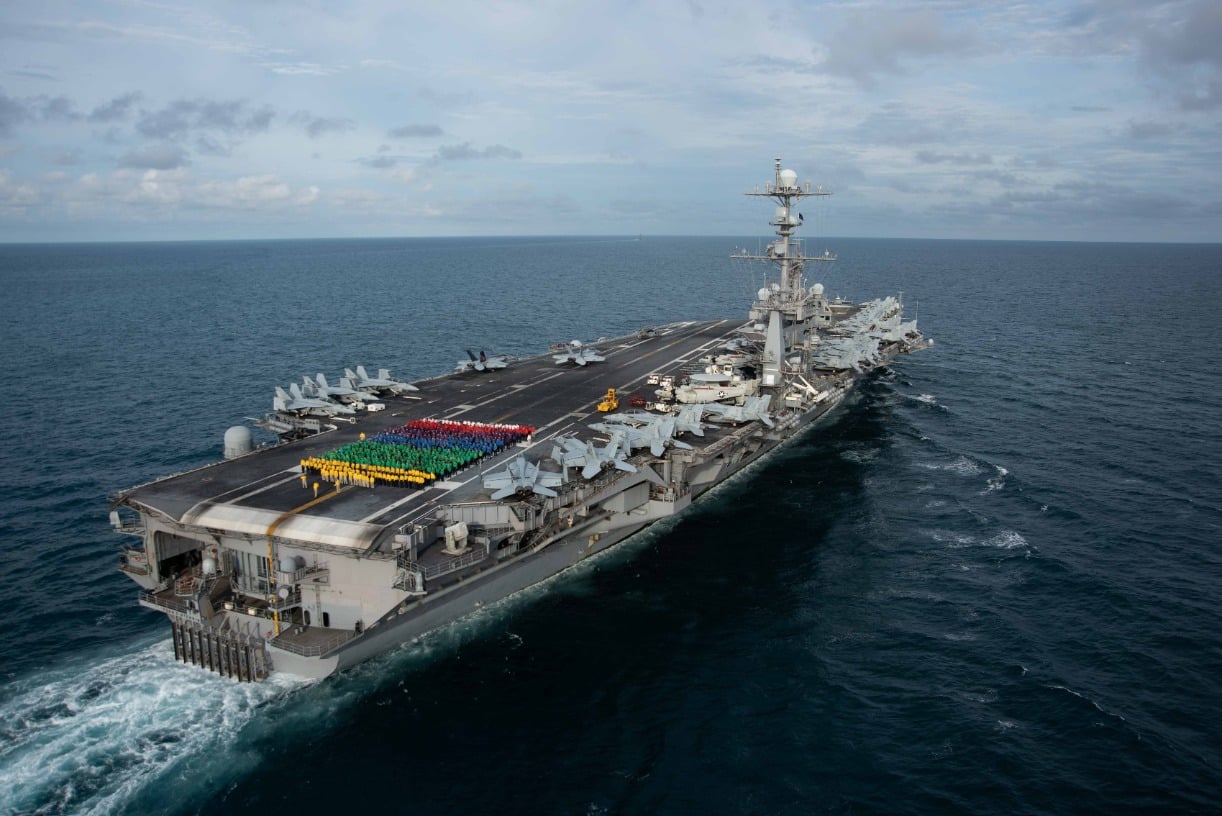This Is Confusing: China Wants a Fleet of Aircraft Carriers But Wants to 'Crush' Navy Carriers

Summary and Key Points: China's strategy to counter U.S. aircraft carriers involves deploying anti-ship and hypersonic missiles to deter their presence, while simultaneously investing heavily in its own fleet of carriers.

-This dual approach reflects Beijing's belief that American dominance in the Indo-Pacific is waning. China plans to use its carriers to project power and enforce regional dominance, especially after neutralizing the American threat. Beijing's vision includes using carriers to assert control over weaker regional militaries once it has established a new defensive perimeter.
-This strategy aims to position China as the primary power in the region, potentially sidelining U.S. influence and compelling neighboring nations to align with Beijing.
China's Vision for a Post-American Indo-Pacific: The Role of Aircraft Carriers
By deploying anti-ship missiles and hypersonic weapons, China believes it can threaten expensive U.S. aircraft carriers so much that Washington will prefer to keep them away. This would negate America’s greatest naval asset before it could even fight.
Even as China boldly moves to make U.S. aircraft carriers obsolete, Beijing continues pouring resources into building up its own fleet of aircraft carriers. If China’s defenses have negated the threat that carriers pose in the modern age, then why would they sink so much money and resources into the same, purportedly obsolete asset?
China Thinks America’s Leadership Will End
China truly believes that the United States’ days are numbered as the dominant power in the Indo-Pacific, and possibly the world. Beijing is acting on this belief. Its leaders are not only planning for the defeat of the Americans in combat – they are also planning for the post-American world. They intend to use aircraft carriers to enforce their will on recalcitrant neighbors, the way they believe the Americans use their carriers now. But they plan to do this only after they think they have quelled the American threat.
With a freer hand in the Indo-Pacific, China will deploy all its assets to force conformity with the Chinese Communist Party. If the Chinese do deploy their carriers to augment their inevitable invasion of Taiwan, they will likely do so only once they believe American forces have been sufficiently degraded.

For now, it is very likely that the carriers in question would not even be ready for deployment.
The Chinese think they can overwhelm America’s expensive aircraft carriers with far cheaper and easier to produce missiles. Because aircraft carriers are the beating heart of America’s maritime power-projection strategy, by either losing these systems or by not deploying them out of the fear of losing them, the Americans will be forced to accept whatever new paradigm Beijing wants to impose on the Indo-Pacific. In other words, the Americans will either outright lose a war, or they will seek an accommodation with China that will allow for Beijing to take Taiwan.
Shaping a Postwar Regional Order with Aircraft Carriers
Once China gets Taiwan, they can move their defensive perimeter more fully to the First Island Chain, which runs from Japan through Taiwan all the way down to the Philippines. From there, Beijing can press hard against the Second Island Chain, ultimately having power-projection capabilities in the Third Chain and beyond. It is thus the power projection offered by aircraft carriers that China wants, as well as the prestige of these systems. They don’t need or want carriers for a conflict over Taiwan with the United States.
The order of operations matters.
First, the Chinese sink or at least hold back U.S. carriers long enough for them to capture Taiwan and sue for a favorable negotiated settlement. Second, they consolidate their holdings — while still keeping the U.S. carriers at bay with missiles and hypersonic weapons. Third, within the new perimeter they’ve created for themselves, they deploy their growing carrier fleet to bully their neighbors into accepting them, not the distant Americans, as the new powerhouse in the region.
China’s vision is thus to use their carriers against weaker military foes like Vietnam or the Philippines, so long as the Americans are held back. This leaves nations like Japan, Australia, and India to pick up the slack for America, as the Yanks can do little more than watch as China runs roughshod over the region.
And without U.S. leadership on this issue, there is no guarantee that Japan, Australia, and India could, in fact, pick up the slack.
Most Asian States Will Bandwagon with China If America is Gone
As David C. Kang argued way back in 2007, without a strong counterweight to China’s imperial ambitions in the region, historically most nations in the region will bandwagon with China. This is precisely what Beijing is banking on. It will aim to prove to the rest of the region that the Americans are out and are never coming back, and as such, it is best to make a deal with China before Beijing brings down the hammer and sickle.

That is why, despite their heavy investments in making carriers an obsolete system in a great-power war, Beijing continues to invest in them. Of course, both the Americans and their allies in the region will be developing their own strategies to counter China. But for those who inquire as to why China is behaving the way they are, this is why.
About the Author
Brandon J. Weichert is a former Congressional staffer and geopolitical analyst who is a contributor at The Washington Times, as well as at American Greatness and the Asia Times. He is the author of Winning Space: How America Remains a Superpower (Republic Book Publishers), Biohacked: China’s Race to Control Life, and The Shadow War: Iran’s Quest for Supremacy. Weichert can be followed via Twitter @WeTheBrandon.
All images are Creative Commons and/or Shutterstock.
